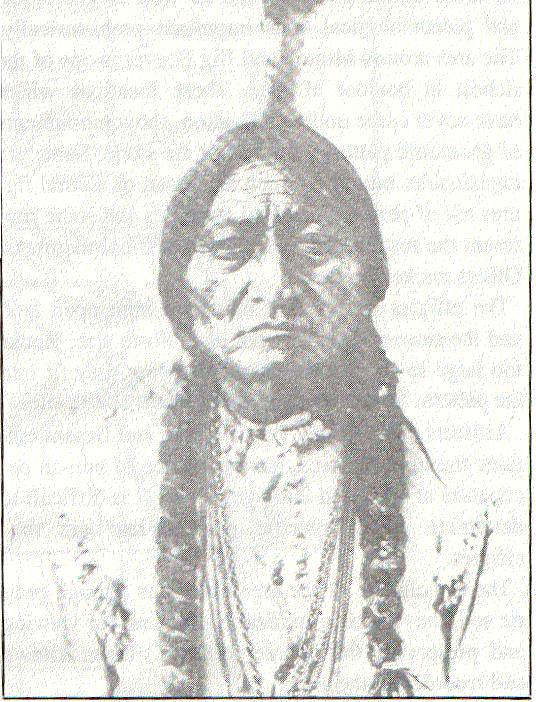Sitting Bull

During the five years that Sitting Bull, the great Sioux chief and his followers lived in Canada, the tribe hunted over a wide area of southern Saskatchewan. As early as 1875 buffalo were becoming scarce. To the natives this animal represented their "general store" since it was used for everything needed for their livelihood.
By 1880 food became so scarce that friction between Canadian Natives and the Sioux increased. Efforts of the American authorities and the N.W.M.P. to persuade Sitting Bull to return to his homeland to a reservation had failed. Louis Legare, a trader at Willow Bunch who had befriended him spent several thousand dollars for supplies to feed the starving natives. It was Lagare who finally influenced them to return to the U.S.A. by promising to make all the arrangements. with their government.
On July 10, 1881, the chief and the remaining 500 Sioux began the mile trek to Fort Bufford. Since they had few horses left, many were eaten, Legare arranged for wagons and drivers to transport the people and their belongings. Several Metis scouts who worked with the N.W.M.P. assisted.
One evening at a campfire near what is now called Buffalo Gap, trouble started when Sitting Bull demanded extra supplies. After Legare failed to make the cheif realize supplies must be rationed fot the trip, he gave them another bag of flour. Legare worried for further trouble, so Johnny Chartrand, the Metis scout, was given two horses and asked to ridde to Fort Bufford with a message for the commander. Fourteen hours later and eighty mile ride, Johnny reached the fort. A mule team and two wagons loaded with supplies was ready in a few hours. That afternoon, Johnny led the way to the Canadian line.
In the meantime Lagare's caravan was moving south eastward through the coulees of the Big Muddy. Sitting Bull at lasr stepped off Canadian soil.
About two years later Chartrand spotted the caravan near what is now called Plentywood, Montana. AS the mule team came closer, the scout joined Legare's party from the rear. When questioned by the Natives, he said he had been to Wood Mountain on an errand for Legare. Sitting Bull became very suspicious when they met an American team, but all went well as they feasted on the fresh supplies. Soon the American commander and his aide arrived by coach. After some discussion Sitting Bull and his son were disarmed and entered the coach for the return to Fort Buffard.
Two days later, the chief shook hands and bid farewell to his Canadian escorts. The warriors also laid down their arms in final surrender. So at last, on July 21, 1881, Sitting Bull gathered his followers together and boarded the steamboat which was to take them downstream to their reservation. Legare and his men returned to Willow Bunch.
--- from the book: Big Muddy Country

